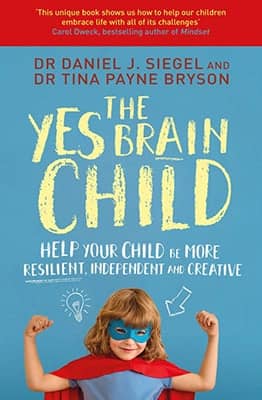Continuing the Journey: Carol Beins Upholds Her Daughter’s Legacy
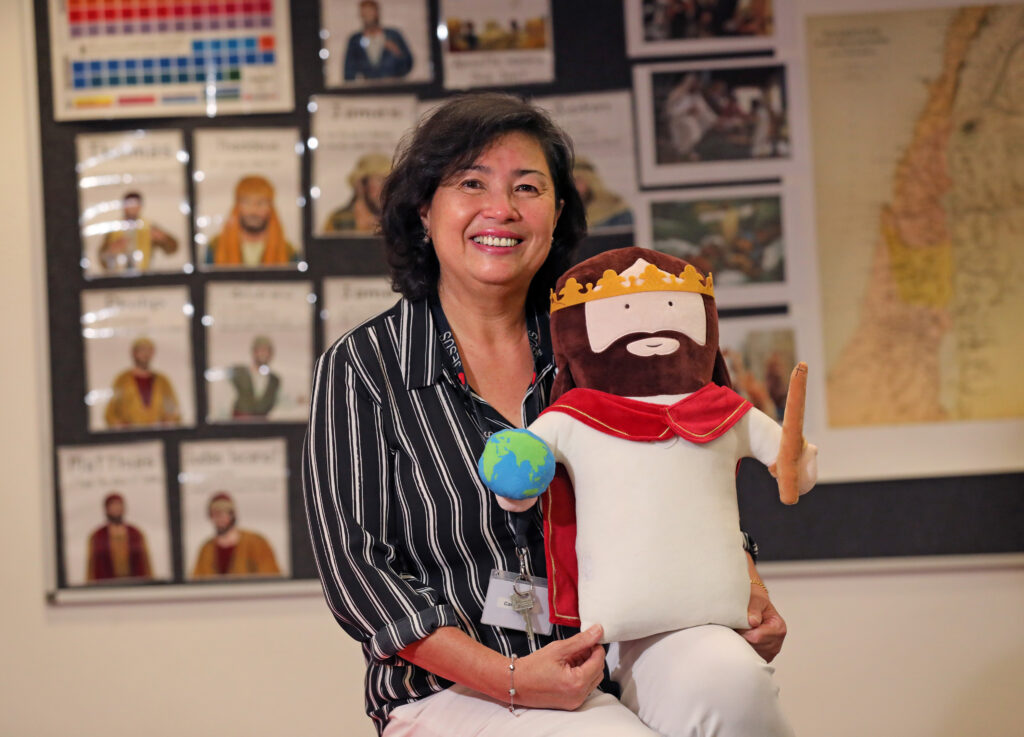
This year, we welcomed Religious Education teacher Carol Beins, who joins us from Mercedes College. In this blog post, she graciously shares her teaching background, her favourite methods for engaging students, and her daughter’s legacy at the College.
Could you kindly share your educational background with us? What inspired you to become a teacher, and how long have you been teaching?
My inspiration came from the Canossian sisters who taught me in Singapore. I learned a lot from them, especially about the Canossian charism, my Catholic faith and my studies. Most importantly, it was their caring and nurturing way towards the students that I liked the most. I decided then that I wanted to be that kind of teacher – warm, caring, enthusiastic and passionate about what I teach and working with young people.
I immigrated from Singapore in 1990, and with the encouragement of my husband and my children, I started my Bachelor in Asian Studies at Curtin University with a major in Asian Languages (Bahasa Indonesia and Mandarin Chinese) and in TESOL (Teaching English as a Second Language) in 2003. Still, with a strong desire to become a teacher, I decided to finish my Graduate Diploma in Teaching at the University of Western Australia in 2005 and got my first teaching opportunity at Chisholm Catholic College (Languages and Religious Education). Eager to learn more about Theology, I completed my Master of Education in Religious Education in 2013. I also hold my Accreditation to Teach Religious Education and Accreditation to Lead in a Catholic School. My learning journey is not over yet, as I would like to finish my Master of Theological Studies at Notre Dame in the near future.
My teaching vocation started in 2006 at Chisholm Catholic College, where I worked for nine years. Following that, I spent a short time at Emmanuel Catholic College before joining Mercedes College in 2016. And now, in 2024, I am part of the Santa Maria College community. The distinctive characteristics of these schools have profoundly inspired and enriched me, shaping the person I am today.
What do you love the most about working with high school students in the area of Religion?
Teaching Religious Education (RE) can be challenging, but I enjoy it. While some students may not respond warmly to the subject, others are curious and open to learning more about it.
When working with high school students, the rapport I have with them is most important before any teaching starts. I want to take the time to get to know them, understanding their learning needs and how I can best help them would be a priority. Having mutual trust and respect can enrich teaching religion. I want to create a safe learning environment for them where they are comfortable asking questions and ready to find answers together. What I cherish the most about working with young people is their vibrant youthfulness, their contagious enthusiasm, and their insatiable curiosity. Engaging with them has also kept me feeling youthful! I love it when we can share stories, conversations, jokes and even a song or two.
I often tell my students that Religious Education is not only about learning about the person of Jesus, Christianity and Catholic Tradition, but it is also for them to open their eyes and hearts to the social justice issues in the world and why religion responds to them. It is a special discipline that teaches students to become compassionate and respond to the world’s needs as Jesus calls us to do. In doing so, they will be led by gospel values, ready to celebrate diversity and inclusion. Topics in Religious Education are often controversial and open up questions and debates. That is when the classroom comes alive!
I love sharing the Parable of the Sower with my colleagues and students. Like the sower, our teachers ‘sow and nurture’ seeds in the young hearts of our students: One of mercy, justice, compassion, and love and then our students grow to be beautiful and fruitful trees in the future enriched by the Mercy tradition they inherited from Santa Maria College.
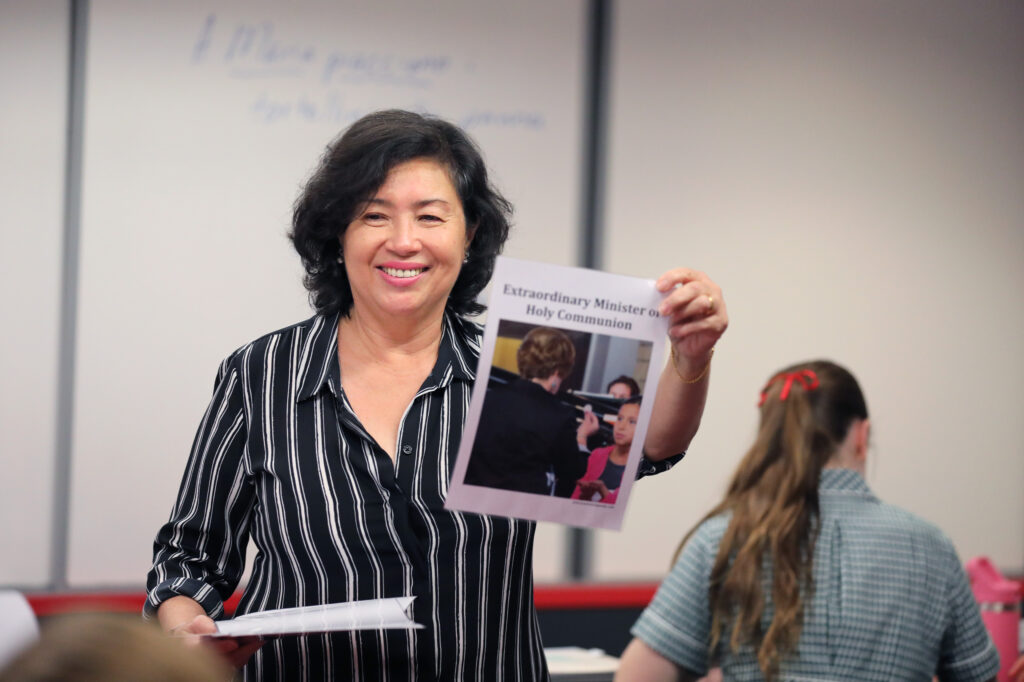
What strategies do you employ to engage students who may have varying levels of interest in religion?
Like other subjects, the Religious Education curriculum has its own rigour of religious content and strong academic skills. There is so much interesting about religion: biblical and historical events, saints and martyrs, religious sites, religious celebrations and traditions, religious art and music, and social justice. That is why I enjoy teaching Religious Education!
To cater to the various levels of students’ interest and understanding, I use a range of teaching materials from PowerPoint presentations, Clickview and videos, newspaper articles, and church documents, invite speakers to talk about specific topics, and excursions to religious places to engage my students. Today, with a strong focus on the use of ICT, there are so many applications out there that can be transformed into learning for my students, such as Kahoot, Quizlets, Adobe Express, Canva, and Minecraft to create videos, storyboards, audio presentations, infographics and much more.
I always start my classes with a prayer or a hymn and some mindful meditation. My students enjoy it when I tell bible stories, share my travels to religious sites I have visited, teach and sing religious hymns or songs and dance with them. It always starts the class on a good note, too!
An example of a creative lesson I have done with my Year 7s was to create different types of games on the topic of the Sacraments, which they covered in class. Each group designed their games and presented them to the class. They provided instructions for their game and took turns to play them. There was such a buzz in the class. We had an array of games made in that activity: a ‘Uno’ version, a ‘snakes and ladders version, a ‘monopoly’ and a ‘bingo’ version of the Sacraments. I was so proud of their achievement – applying their knowledge, collaborating and doing presentations. It was such a fun activity!
Your daughter, Shoshanna, also taught Religious Education at Santa Maria College. How has having a daughter who previously taught at the College influenced your perception of the school and its educational environment?
My daughter, Shoshanna, loved teaching at Santa Maria College. She fitted in well at Santa Maria, having also been educated in the Mercy Tradition at Mercedes College.
She always came home telling me that the staff and students are wonderful and how Santa Maria lives up to the vision of Catherine McAuley and Mercy tradition in the way they foster strong values of diversity, inclusion and social justice which she valued so much.
She believed that I would feel very much at home here, and I must say that I have felt so welcomed by staff and students from the first day I started. It is truly a testament to the hospitality and kindness of the Mercy charism held so highly at this College. I feel so blessed and proud that I get to continue to carry the torch of the vision of Catherine McAuley and the Mercy tradition from Mercedes College and now here at Santa Maria College.
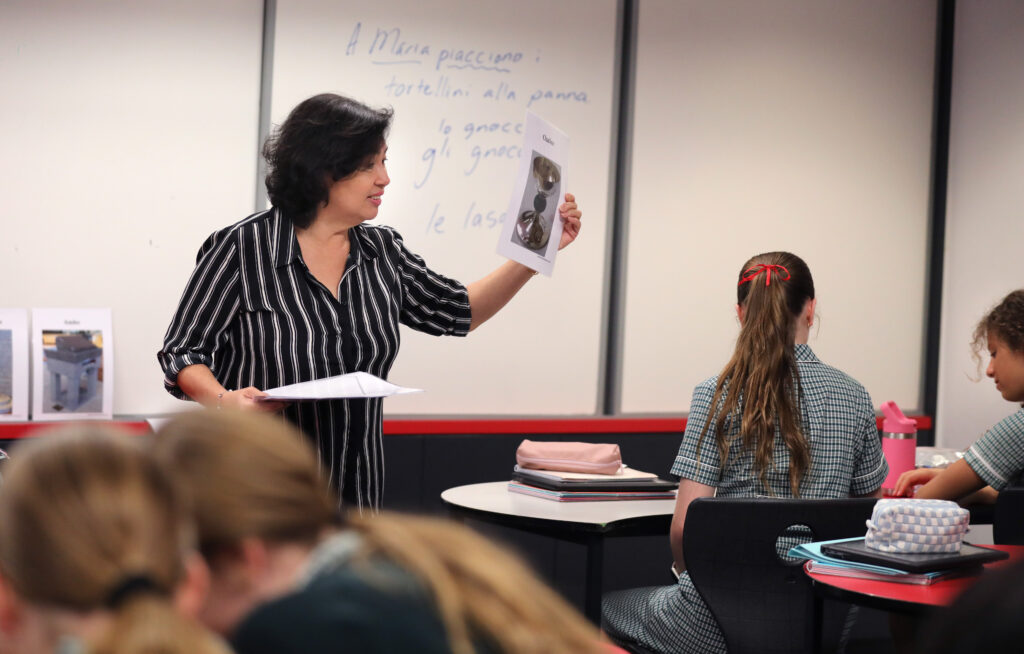
What do you love to do in your downtime?
When I have the luxury of downtime, I like listening to music, reading, beading, doing puzzles, sewing and drawing. Apart from spending time with my children and grandchildren, I also catch up with friends or get involved with activities in my parish. My greatest love is travelling, seeing new places, meeting new people, and experiencing new cultures. So I save every penny, and when I am ready, I will be off on a travel adventure with my husband!
If you could have dinner with any historical figure, who would it be and why?
There are many people with whom I would like to have dinner, but I think I would be very excited if I could have dinner with Pope Francis. It may be a religion-related reason, but I find him fascinating. Having learnt a lot about him in our Religious Education lessons, I think it would be cool to meet him in person. I think it will be with an Argentinian or Italian meal and an evening of learning about who he is and listening to his own story and his faith.
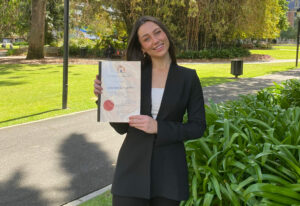
Uplifting the Unvoiced: Caitlyn Goldney’s (2013) Inspiring Advocacy
Caitlyn Goldney (2013) is a passionate advocate dedicated to giving back to the community through her legal savoir faire.

Combating The Attention Span Crisis In Our Students – Jennifer Oaten
It is no secret that attention spans have been steadily declining, especially among younger generations growing up immersed in digital technology. The average person’s attention span when using a digital device has plummeted from around two and a half minutes back in 2004 to just 47 seconds on average today – a dramatic 66% decrease over the past two decades.

Weekly Wrap Up: Term 2, Week 2, 2024
Week 2 has come to an end! This Weekly Wrap Up features highlights from Scuba Diving Club, the Sisterhood Series, and Boarding ANZAC Service.
- Featured, StaffSpotlight
Author: Santa Maria College
Santa Maria College is a vibrant girls school with a growing local presence and reputation. Our Mission is to educate young Mercy women who act with courage and compassion to enrich our world. Santa Maria College is located in Attadale in Western Australia, 16 km from the Perth CBD. We offer a Catholic education for girls in Years 5 – 12 and have 1300 students, including 152 boarders.





